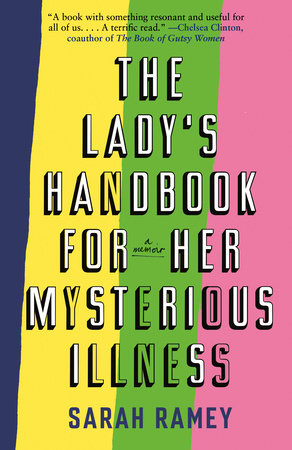The Lady’s Handbook for Her Mysterious Illness Reader’s Guide
By Sarah Ramey


1. WOMI (a woman with a mysterious illness) exist all around us. So do MOMIs and POMIs (a man of mysterious illness, or person of mysterious illness). The author, Sarah Ramey, explains that many people she has spoken to “either knew a woman with a mysterious illness, were married to a woman with a mysterious illness, or were themselves a woman with a mysterious illness” (pg. 18). How does this new term resonate with you? Do you identify WOMIs in your everyday life?
2. What is it like going to the doctor as a woman, and how is that different than a man’s experience? How does the book explore this topic?
3. One of the most frustrating experiences for WOMIs is that doctors often suggest their symptoms are psychological. Why do you think this happens so frequently? Why is it more common for women, and how did this book expose that discrimination? What other kinds of discrimination have you experienced or heard about in a medical setting?
4. This memoir is written in an untraditional format where each chapter is broken up into a series of vignettes and page breaks. Why do you think the author chose this writing style, and how do you think it helps tell her story? How would the book read differently if it were written in a more traditional way?
5. Throughout the book, the author explores the flaws of both the traditional medical system and alternative medicine. How do both systems fail her and other WOMIs? How are these failures similar and how are they different?
6. The author explains how New Age medicine often discourages negative emotions and how destructive this can be. What are the repercussions of this philosophy against negative thoughts? How did this affect the author’s experience?
7. What did you know about functional medicine before reading this book? How do you hope to see it integrate into our medical system in the future?
8. The author says, “Almost all positive change begins with a negative no” (pg. 300). Can you think of an example? How did this play out in the book?
9. How does this memoir explore themes of isolation? What did you learn about isolation and chronic illnesses that you may not have realized before reading this book?
10. The author compares a hero’s journey in literature with a heroine’s journey, using examples like Harry Potter and Frodo compared to Persephone and Alice in Wonderland. How do you compare the hero and heroine’s journey, their differences and similarities? If the heroine’s journey is a journey inward (or a “descent”), how can we apply that to our own lives? How did the author apply it to her story?
11. How did this book make you look at medicine differently? Are you going to change the way you approach your own health?
12. What lessons or themes do you think the author hoped readers would take away from this book the most? What moments really resonated with you?
Just for joining you’ll get personalized recommendations on your dashboard daily and features only for members.
Find Out More Join Now Sign In